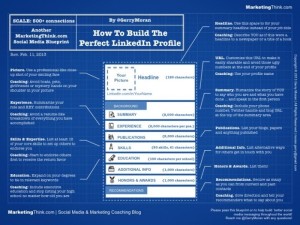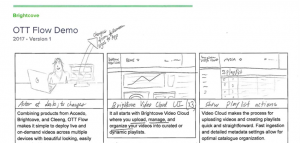To maximize the effectiveness of your digital marketing efforts, it’s important to be constantly testing and optimizing your campaigns. A/B testing is a way for marketers to test different variables and see which are the most effective at generating leads and conversions.

A/B testing can provide actionable, measurable and (sometimes) immediate results. Often the smallest change can make a big difference. We’ll walk through the basics of A/B testing, what to test, what to measure and how to get started.
Defining A/B Testing
A/B testing is a pretty simple concept. You essentially use two versions of an element with one changed variable and test each version on a different sample. This could be something as simple as two different subject lines in an email or two different landing page layouts. In the end, you choose the version that brings a better response rate and then use it moving forward. It can help you increase effectiveness without having to increase visitors. For example just changing the wording of a CTA button could dramatically increase your conversion rate.
Ways to Utilize A/B Testing
A/B testing can be used to test a variety of elements in your marketing program. Here are some different ways it can be utilized:
1. Call-to-Action buttons – You need to make sure you create the most “click-worthy” CTAs in order to maximize your conversion rate. A simple button has many different elements that you can test. For example, the wording on the button (Download Now vs. Get the eBook), location on the page (top, bottom, left, right), style of button (simple vs. gradient), size (small or large), color, etc. Start with one variable and slowly test different changes over time.
2. Landing pages – When you create a landing page for a premium content download, webinar or other purpose, the design of the page, the headline and the supporting copy can have a large impact on conversions. Test out different designs and layouts, but remember to only change one aspect at a time. If you have two versions, send half of the visitors to one and half to the other. Over time you’ll be able to see which version is the most successful and why.
3. Form fields and length – The type of information you ask and the number of fields on your form can have a dramatic impact on conversions. Marketers always want as much information as they can get from a prospect, but, depending on the offer, a prospect might not be as inclined to fill out a form if it is too long or asks too many detailed questions (i.e. budget). Try testing different forms to see if it makes a difference. We would also recommend using progressive profiling as an alternative way to balance form fields and length.
4. Email subject lines – Subject lines can make or break your email campaigns and are often the reason people decide to open your email or delete it. Before sending out an email to your entire segment or list, test 2 different subject lines on a small sample, then send the winning to the remaining contacts in your list to optimize your email for the most success.
5. Email sender names – Sometimes changing the person who is sending the email makes a difference in open rates. Are your emails being sent from your president, sales rep or just your company’s info address? Sometimes an email coming directly from a sales rep that has an established relationship with the contact will get a larger open rate than an email from your CEO. Test and see what makes a difference.
6. Images – Test different images on your landing pages or emails to see if they make a difference with clickthroughs, views or downloads. Supporting images to your content and offers can determine different actions by visitors.
7. Length of copy – Whether it is an email or a landing page, sometimes a shorter message is better, or a longer explanation is needed. Test different lengths of copy to see which engages your clients more to take the action you want.
Getting started
When getting started, one of the most important parts of an A/B test is to keep it simple and only change one variable. For example, if you are sending an email and want to test the subject line, make sure the body of the email is exactly the same in both emails. Don’t change the subject line AND the length of the email because it is harder to see what made the real difference in conversions.
Also, be aware that not all tests will have a statistically significant result. This did not mean that you failed; it just means it doesn’t make a big difference. Find another aspect that can be tested and test again. One last thing to remember: don’t trust your gut—trust the results! Your personal preference might not be the best approach to take, which is where the science of A/B testing is so helpful.
A/B testing is an ongoing process. Each time you test, you take any knowledge you gain and try to apply that in the future. As you write more content, create more landing pages or make changes to your website, A/B testing can help you see what is working so you can improve your marketing efforts.
Business Articles | Business 2 Community
(600)








